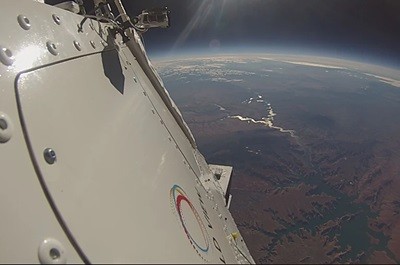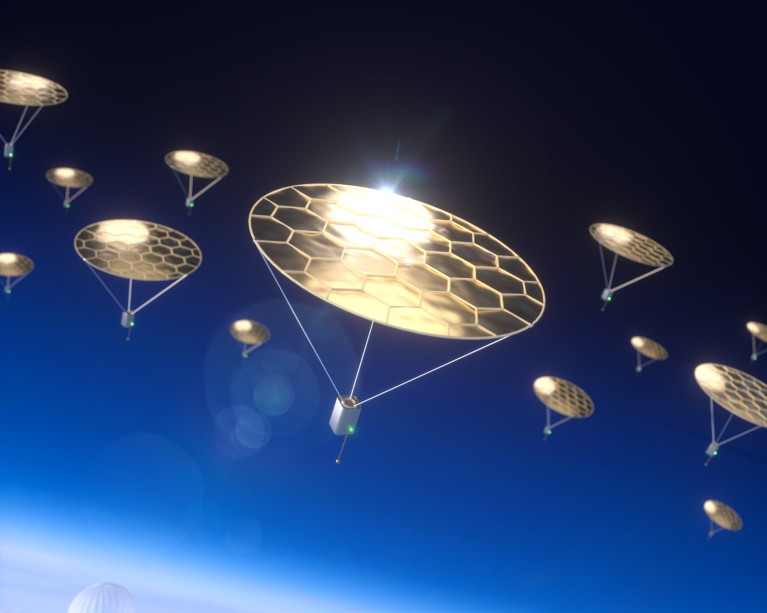
Scientific ballooning takes off
原始链接: https://www.nature.com/articles/d41586-025-02576-w

## 太阳能驱动的飞行器用于大气探测 哈佛大学的研究人员成功演示了一种新型的无动力飞行装置,仅利用阳光提供升力。该研究发表在《自然》杂志上,这种厘米级的晶圆利用了改进的克鲁克斯辐射计原理——利用光吸收产生的温差来产生向上的力量。 该装置由两层超薄的氧化铝组成,一层透明,另一层涂有吸收阳光的铬。气体分子撞击较热的铬层时会获得动量,将晶圆向上推动,而战略性地放置的孔洞可以增强升力,模仿直升机旋翼。 这项突破可能使这些微小而耐用的飞行器群能够探索中间层(地球上方50-100公里),这是一个 largely 未被研究的大气层。与气球不同,这些“飞碟”不需要电源或运动部件,为大气传感和研究提供了一种潜在的革命性方法。该团队的成功验证了多年的理论工作,并为未来的大气探测开辟了令人兴奋的可能性。

Devices (artist’s illustration) kept aloft by sunlight could take sensors into an understudied layer of the atmosphere.Credit: Schafer et al. Nature (2025)
Theory and mathematics said his device would fly. But Ben Schafer was still pleasantly surprised the first time he flipped a switch and watched the centimetre-square device his team had built levitate, if only for a moment before flipping over.
It was a proof of concept for a design that has been published today in Nature1. One day, it might enable swarms of tiny, unpowered flying saucers and other devices with no moving parts to explore the highest reaches of Earth’s atmosphere ― near the edge of space ―using sunlight alone to remain aloft.
“You don’t really believe it until you see it,” says Schafer, a physicist at Harvard University in Cambridge, Massachusetts.
To design their flying saucer, Schafer and his team capitalized on a quirk of physics that was discovered in the late 1800s. The idea was encapsulated in a weathervane-like device encased in a low-pressure chamber that will spin if exposed to light, without the input of any other force. The chamber apparatus, called a Crookes radiometer, is now a classic science-education device.
What is new is the design. Schafer and his team used modern nanofabrication techniques to create an ultralight two-layered wafer. The layers, which are made of aluminium oxide, are roughly 1,000 times thinner than a typical human hair and are connected by narrow filaments. The top layer is transparent, allowing sunlight to shine through it, and the bottom layer is coated in chromium, which absorbs sunlight.
Scientific ballooning takes off
When gas molecules hit the bottom layer, they absorb some of its heat and then bounce off the device with more momentum than gas molecules bouncing off the colder, top layer — an effect that pushes the wafer upwards. The conditions for such reactions can be found in the mesosphere, the layer of the atmosphere some 50 to 100 kilometres above Earth’s surface.
Importantly, Schafer’s device includes a new feature: the two layers are perforated with holes that allow gas molecules to move from the cold and transparent side to the hot chromium side, creating lift that is similar to that created by a helicopter’s whirring rotor, says Igor Bargatin, an engineer at the University of Pennsylvania in Philadelphia who has pioneered work on similar devices.